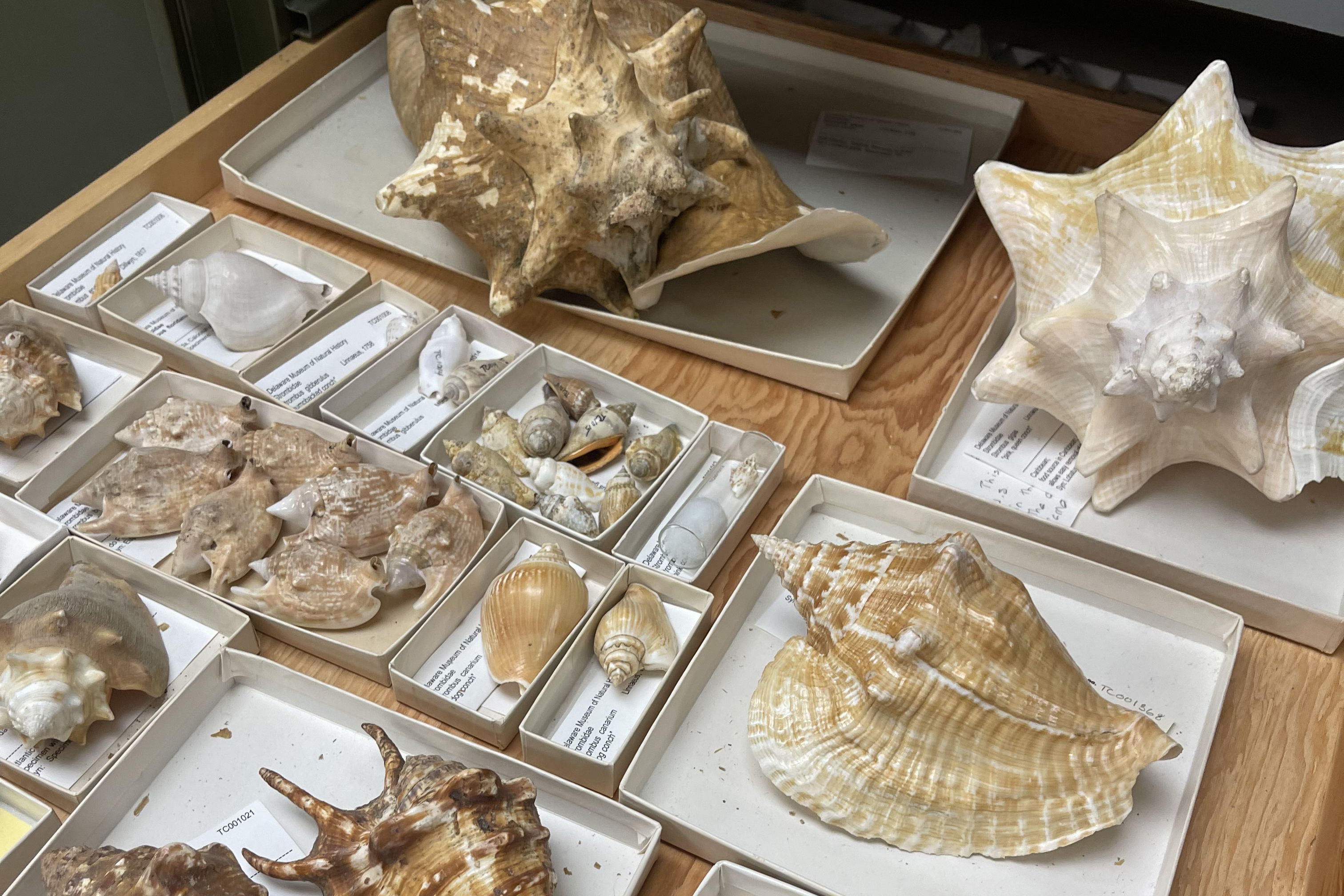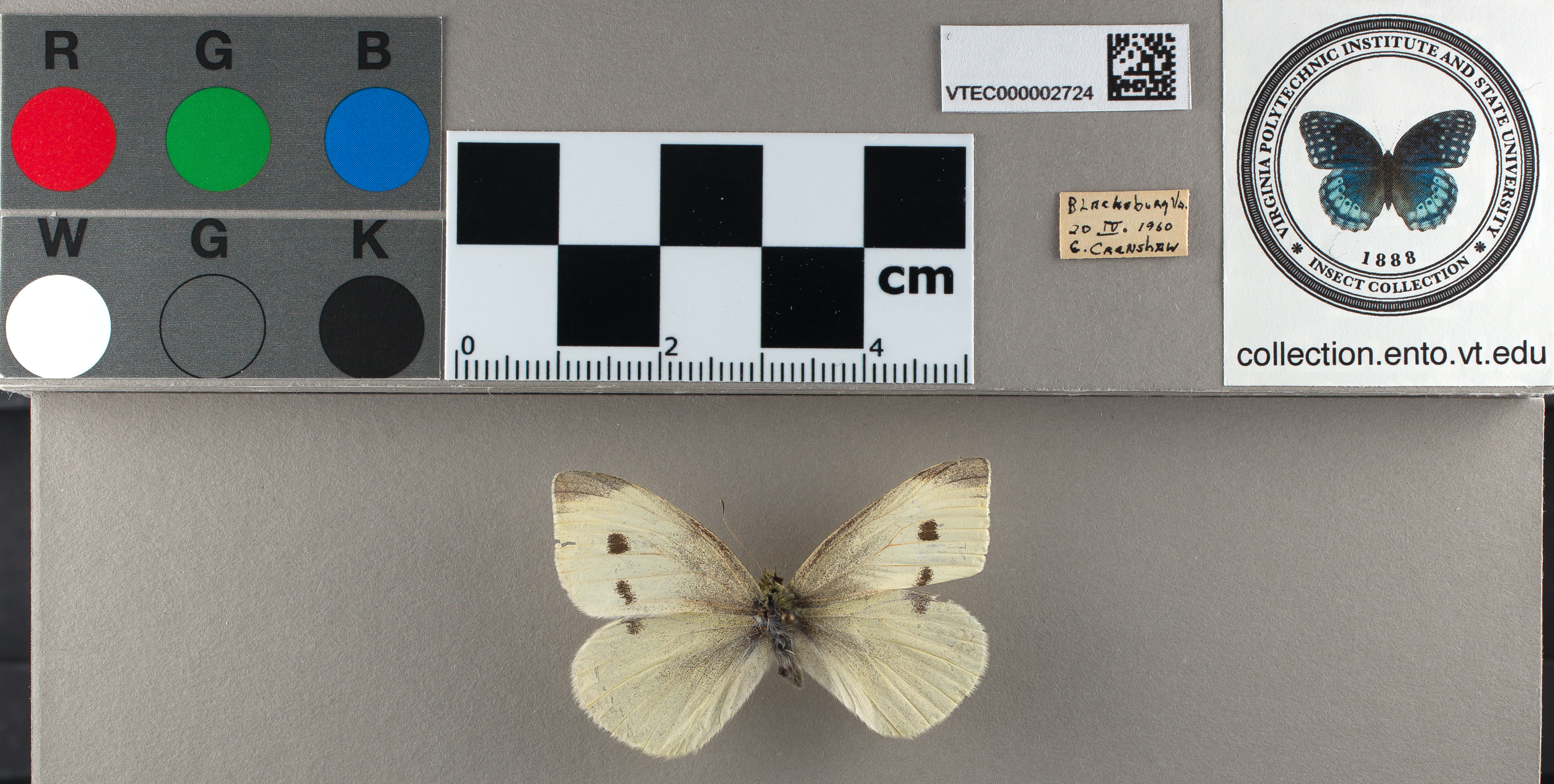When Parisa Tabiatnejad entered the George Washington University in fall 2020, it wasn’t the easiest time to be a college student. The COVID-19 pandemic necessitated remote learning, and Tabiatnejad—who knew she was interested in science but hadn’t yet decided on her area of focus—wouldn’t have the laboratory or research access she would have under normal circumstances.
Fortunately Tabiatnejad was part of the Women’s Leadership Program (WLP), meaning her introductory biology class was taught by WLP Director and Associate Professor of Biology Carly Jordan. Funded by a RAPID grant from the National Science Foundation (NSF), Jordan that year was pioneering an innovative pedagogy for students kept away from campus by the pandemic: a set of four course-based undergraduate research experiences, or CUREs, that help students conduct research using data from digitized natural history collections.
“There are millions and millions of natural history collections records—specimens sitting in a box somewhere that have been photographed and imaged and put on databases that anyone can access for free,” Jordan said. “So if faculty can understand that these resources are there, get some training on how to understand these massive datasets, and what are some tools that you can use to ask and answer ecological questions with them, then they represent an endless opportunity for research that’s completely free and can be done in person or online.”
The initiative is part of the Biological Collections and Ecology and Evolution Network (BCEENET), a community of educators, collections managers and data experts who promote undergraduate scientific exploration using free online resources—providing training materials for educators who want to pass this expertise on to their students. Since 2020, the CUREs have been adopted in 33 institutions, reaching more than 2,800 students. This year the NSF marked their success and continuing impact with a five-year, $1 million award to Jordan and GW that will allow the team to assess the impacts of these CUREs on student learning and interest in science.
The CUREs were essential at the peak of the COVID-19 era, but their relevance hasn’t faded. Implementing the CUREs could have major implications for the overall diversification of STEM, Jordan said, both because they are accessible to institutions at all levels of funding—several of the participating institutions are community colleges, where on-the-ground research opportunities aren’t readily available—and because they provide opportunities for students who might not be able to participate in traditional fieldwork. A student who has to work a demanding job, deals with a physical disability or cares full time for a family member may not be able to take time away for research, but the since CUREs take place during class time, they don’t have to. By lowering the barriers to scientific discovery, the CUREs expand the pool of potential scientists.
“A big part of diversifying STEM going forward is making sure that everybody actually has access to that [research] moment that can be so transformative for students,” Jordan said.
Tabiatnejad and her classmates, for instance, worked with thousands of digitized butterfly specimens to investigate how changes in wing pigmentation patterns might be connected to ecological changes over a period of years. Working with these massive datasets in her first college biology class gave her the experience and confidence to continue her research career as her interests evolved, Tabiatnejad said. When, the following summer, she joined the lab of Associate Professor of Biology Scott Powell to study ant colonies, she wasn’t intimidated by the volume and pace of her work.
“I had already learned how to organize datasets and organize spreadsheets and work with data in a way that was manageable but efficient,” said Tabiatnejad, who since spring 2021 has also been a science communications intern at BCEENET. “It made me feel like science was something I could actually do.”
The CUREs’ purpose goes beyond building research skills to strengthening students’ scientific confidence, Jordan said—and that also means getting them comfortable sharing their research with peers. Last month, Tabiatnejad and Jordan traveled together to Delaware for an Ecological Society of America (ESA) conference, at which Tabiatnejad presented her work on ant colony-cleaning behavior. The expanded NSF grant includes funding for more students to travel and participate in academic conferences.
Tabiatnejad also got to see firsthand the difference between a digital collection and a physical one when she and Jordan went backstage at the Delaware Museum of Nature and Science with Director of Collections Elizabeth Shea, a co-principal investigator on the NSF grant.
“There is a big difference between seeing like a giant number on the collections database itself, and then physically seeing the warehouse full of individuals,” Tabiatnejad said. “That was a bit crazy—just rows and rows and rows and rows of these boxes.”



